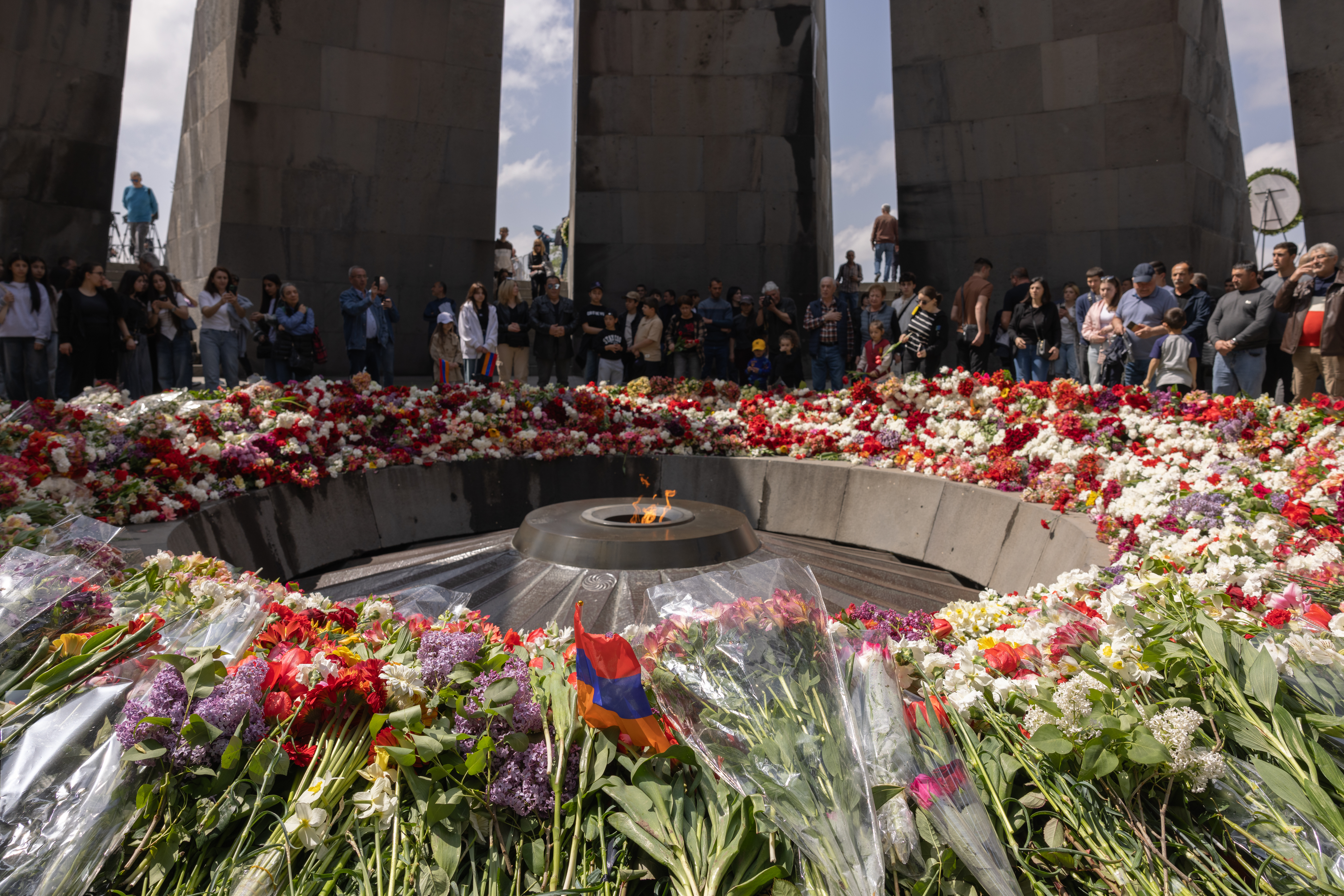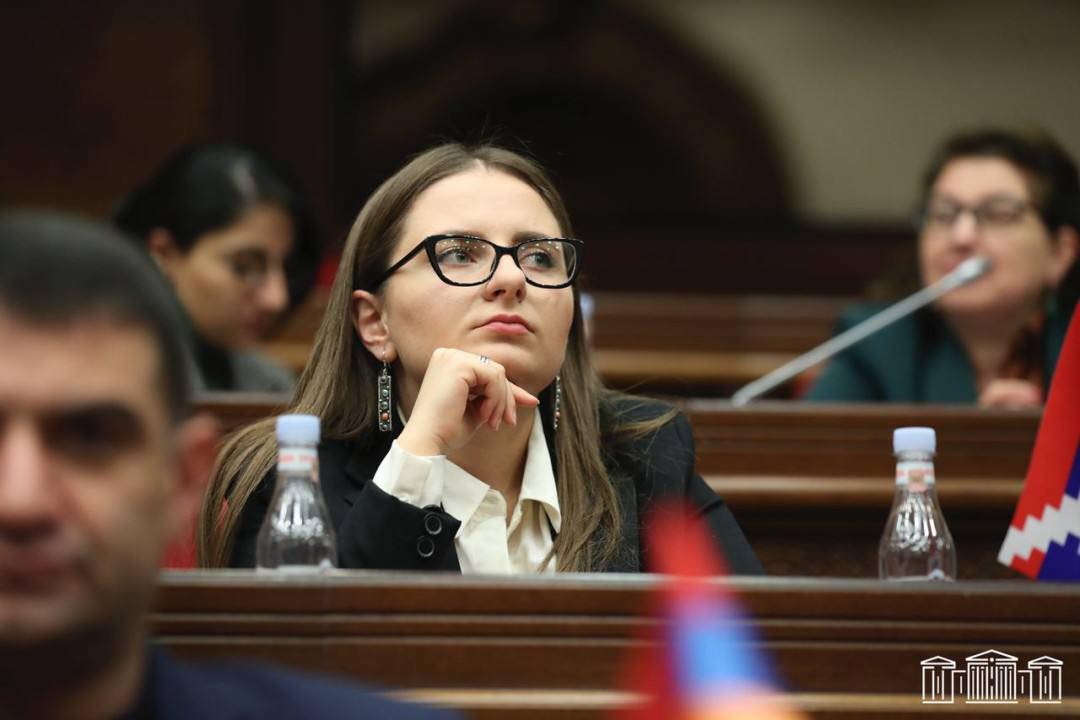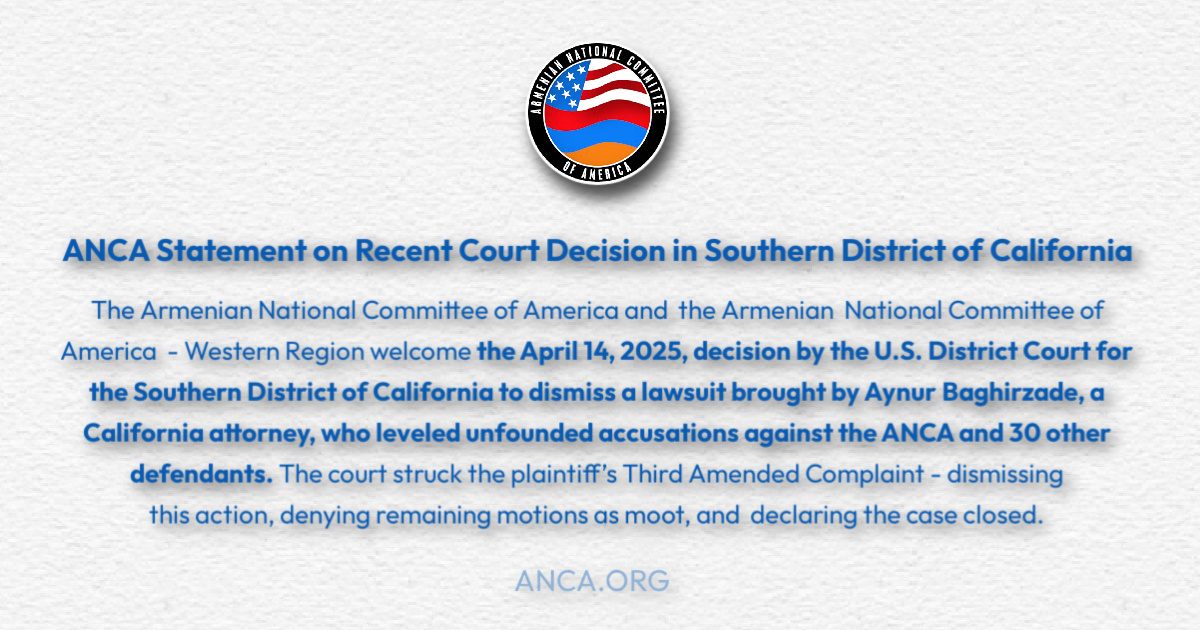Balakian Discusses Genocide, Cultural Destruction at Holocaust Museum Houston

Anticipation was peak as a record crowd gathered at the Holocaust Museum Houston on Sat., March 14 for an emersion into a fascinating lecture on Raphael Lemkin, the 100th anniversary of the Armenian Genocide, and cultural destruction.

Tamara Savage, the director of the Holocaust Museum Houston, introduced Balakian, the Donald M. and Constance H. Rebar Professor of the Humanities at Colgate University, who has made the genocide a key part of his life’s work as an award-winning writer, poet, and genocide expert.
Balakian started by praising the history of Jewish rescue, witness, and intellectual work on the Armenian Genocide. From Ambassador Henry Morgenthau to Raphael Lemkin, to Franz Werfel and into the modern era of Jewish scholars working on and standing up for the Armenian Genocide discourse, Balakian noted that “the role Jews have played in bearing witness to and later defining the Turkish genocide of the Armenians has been profound.”
It was Lemkin who became the father of the U.N. Genocide Convention of 1948. It was Lemkin who coined the phrase “Armenian Genocide” in the 1940’s. As a graduate student he challenged his professor after learning about the Turkish massacres of the Armenians, asking, “How can it be that if one man kills another he is charged with murder, but if a whole nation-state kills more than a million people they are allowed to do it without any consequences?” This moment ended up changing his career path.
Among the many layers of Lemkin’s understanding of genocide as a crime is the concept that the destruction of culture is a vitally important aspect of the genocidal process. At the core of every group identity are the cultural institutions that codify group identity.
The official number of dead in the Holocaust, according to the U.S. Holocaust Museum, is 5.1 million. In the Armenian case, Lemkin put the death toll at 1.2 million. The epicenter of killing was in 1915 and 1916. About two-thirds of the Armenian population perished.
Balakian discussed some defintions of culture as essential to the identity of any ethnic or group. He also analyzed some of the tactics of Turkish assault on Armenian culture in 1915. He discussed the destruction of about 4,500 churches and schools; the killing of the culture producers—the writers, teachers, editors, clergy, and journalists—on April 24 and after thoughout Turkey; and the forced conversion of Armenians to Islam as a way of eradicating ethnic identity.
Balakian discussed the the city of Ani in eastern Turkey as an example of the politicization of historical monuments and their preservation in a post-genocidal context. Ani, which Balakian suggested might be seen as the equivalent of Florence for Italy, was the medieval capital of the Armenian Bagratid Kingdom in the 10th and 11th centuries, and is today on the Turkish-Armenian border. It was celebrated for the artistry of its churches and other structures. The city was abandoned in the 17th century and has since been subjected to earthquakes and destruction that have left it in ruins.
Balakian referred to Grigoris Balakian’s The Ruins of Ani to suggest that scholars might now see the erosion and falsification of Ani by the Turkish government through a post-colonial lens. He emphasized the connection Armenians have to eastern Turkey, but also the experiences of exile and loss because of what he called the “lock out syndrome”—the result of Ankara’s policy of disallowing even proper identification on the signage of historic Armenian churches.
In response to a question from the audience about the U.S. government’s refusal to go on official record about the Armenian Genocide, Balakian noted that the State Department remains afraid of standing up to Turkish coercion and pressure, and this seems to be a failure of ethical courage. Twenty-two countries have passed a resolution recognizing the Armenian Genocide, including Poland, Sweden, France, Greece, and Switzerland.
Vreij Kolandjian thanked Balakian for his lecture and the Holocaust Museum Houston for emphasizing the importance of the Armenian Genocide by hosting two lectures and one exhibition on the topic three months in a row. Balakian’s talk stunned the audience to rapturous applause.










Peter Balakian has done a noble service to the Armenian cause in his address at Houston, as is always the case with him. His efforts are notable in several respects. First, in emphasizing the systematic destruction of our culture: the churches, the schools, the museums, in addition to over one million innocents in the 19th and 20th centuries. This puts the lie to the Turkish claim that they were merely responding to traitorous act of Armenian soldiers. The Turks do not address the fact that thousands of Armenians served the Ottoman Empire loyally in the 19th and 20th centuries. Second, it is admirable that he recognizes and honors Jewish contribution to recognition of the genocide.We need coalitions to support our efforts even though many Jews today minimize the realities of the Armenian Holocaust. Lastly, he points to the shortsightedness and cowardice of our State Department notwithstanding that so many countries recognize the facts of history. This is not the only example of shortsightedness on the part of our country in foreign relations.
I don’t know where you are from but I have many Jewish friends AND NOT ONE MINIMIZES THE REALITITIES OF ARMENIAN GENOCIDE furthermore they all believe if they forces that be would have stopped it THE HOLOCAUST would have NEVER TAKEN PLACE Their words not mine
The “erosion and falsification of Ani” does not come from Turkey. Turkey has tried to do it, and continues to attempt to do it, but no visitor to Ani has ever given any regard to it. The real erosion and falsification of Ani is now coming from the secretive foreign band of “experts” who control Ani. For example, Carsten Paludan-Müller, director of The Norwegian Institute for Cultural Heritage Research, considers that the identification of Ani as an Armenian site, or the identification of a particular structure as Armenian, is “ideological” rather than being an architectural or archaeological question, and he has stated that the goal of his project’s team (aka the “Ani Workshop”) is to get Ani “de-nationalised”. Under the “Ani Workshop”, Ani is no longer an archaeological site whose preservation and study should be guided by international protocols. Ani is now a tool to be used in ngo, EU, and US government-controlled “Turkish-Armenian dialog” exercises, where discussions about the identity of, or significance of, Ani’s monuments is dictated by the goals of the Ani Workshop’s paymasters.